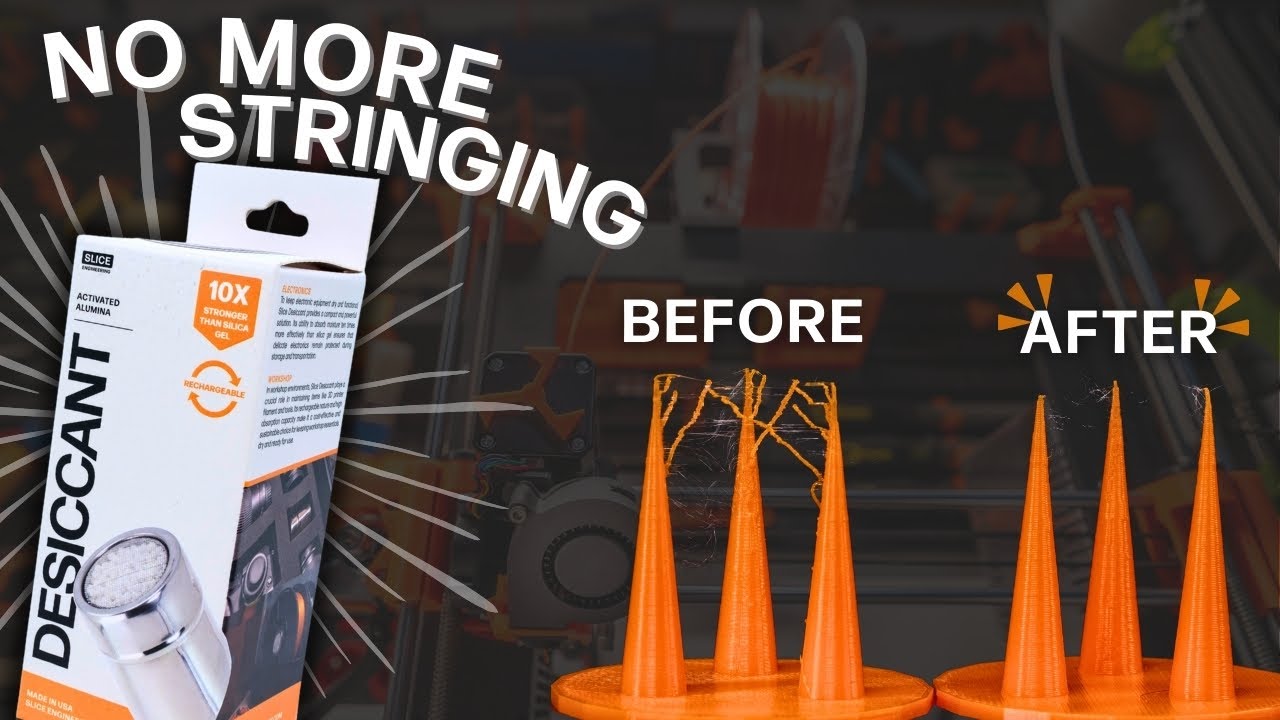Boost Your 3D Printer’s Thermal Performance! | Boron Nitride Paste Explained
Have you ever wanted to improve the thermal performance of your 3D printer? Today, we’re diving into exactly that. I’m Dan Barousse, CEO and co-founder of Slice Engineering, and we’ll be discussing boron nitride paste—why you should use this compound in your 3D printer, and why NASA is using it for upcoming Mars and lunar missions.
We get a lot of questions about this product: what it is, what it does, and what it’s for. Boron nitride paste is made from boron and nitride—two compounds you can find on the periodic table (boron, nitrogen, and other elements). This material has some unique properties that other compounds don’t. It offers extremely high thermal stability—up to 2000°C before it starts to degrade. Few materials can match that. It also has very high thermal conductivity, meaning it effectively transfers heat, similar to certain metals. However, unlike metals, boron nitride is not electrically conductive—a critical feature in many applications.
Because of these properties, NASA is experimenting with boron nitride for test enclosures and habitats on the Moon and Mars. If humans do eventually live on these celestial bodies, the inner lining of those habitats will likely be made from boron nitride.
There are different forms of boron nitride, such as hexagonal (which we’ll focus on today), cubic, and amorphous. At Slice Engineering, we use a paste containing hexagonal boron nitride particles suspended in an aqueous solution (water-based). When the water evaporates, you’re left with pure boron nitride, enabling effective heat conduction while preventing electrical conductivity.
We use boron nitride paste at Slice Engineering to ensure even heat distribution in hot blocks, enhancing printing performance and efficiency. Since it’s not electrically conductive, you can install a heater and a sensor without worrying about shorting them out or causing electrical hazards. It’s also inert, so it won’t react with metals like steel, aluminum, or copper alloys, nor will it degrade plastics. Plus, it’s safe enough that you could eat it (though I wouldn’t recommend it—it would probably cause indigestion).
In its paste form, boron nitride is suspended in water. When heated, the water evaporates, leaving a highly conductive layer. Our literature states that boron nitride paste offers around 31 W/mK at 100°C. The hexagonal structure provides the highest thermal conductivity (between 200 and 400 W/mK), comparable to copper alloys. However, in 3D printing, the molecular layers may not align perfectly, so the effective conductivity is lower.
Boron nitride paste has a wide range of applications. It’s used in the semiconductor industry for heat dissipation and in high-temperature furnaces, where it reflects heat back into the furnace, maintaining consistent temperatures. In certain high-temperature rotating processes (like high-speed bearings), boron nitride paste serves as a lubricant. In 3D printing, we use it primarily for heat transfer in temperature sensing and heating applications, like potting heater cartridges into hot blocks.
In applications like thermal wells (used in chemical and oil and gas industries), boron nitride paste can enhance temperature sensor accuracy by improving thermal conductivity between the well’s outer and inner surfaces. Similarly, in 3D printing, using boron nitride paste reduces air gaps (which act as insulators), resulting in better temperature control and extended heater life.
To apply boron nitride paste to your 3D printer’s hotend, follow these steps:
- Remove the hotend, heater, and temperature sensor.
- Apply the paste to the heater’s exterior and the interior holes of the hot block.
- Reinsert the components and let the paste dry. You can speed this process by heating the hotend to 90°C, causing the water to evaporate.
Boron nitride paste is water-soluble, making cleanup easy. If you need to remove a heater or sensor later, use a tool like our Heater Cartridge Removal Wrench, or simply use a screwdriver or pick to break the internal bonds.
In summary, boron nitride paste improves thermal conductivity between heater cartridges and hot blocks, resulting in more power and performance from your hotend. It also enhances temperature sensor accuracy and offers a range of other benefits for heat transfer in 3D printing applications. If you’re looking for an affordable, easy-to-use upgrade for your 3D printer, boron nitride paste is worth considering.
Recent Posts





